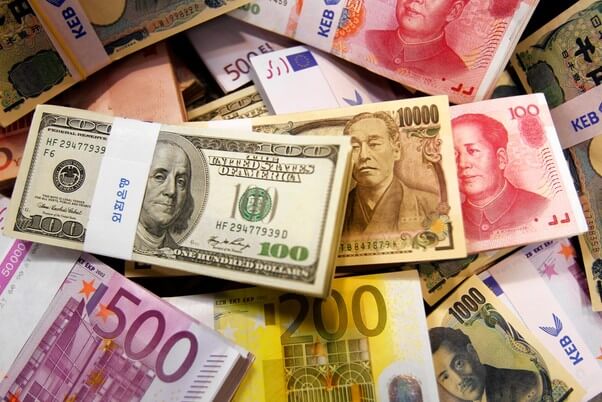It is currently taken for granted that each country issues its own currency, but some have questioned whether this is the best economic option. In this regard, Robert Alexander Mundell (1932-2021), a Canadian economist who won the Nobel Prize in Economics in 1999, proposed the most reasonable monetary zone theory.

Finding points worthy of study in things that seem obvious is also an important signal to distinguish between great scholars and catchphrases. Global economic and financial integration is deeper today than ever before. How should we understand a single world currency within this framework?
In the two decades between the two world wars, the world economy was extremely unstable and the currencies of the various countries devalued one after another. During and after World War II, the United States of America and, secondarily, Great Britain laid the groundwork for establishing their global financial leadership, aimed at building a unified monetary system: which, by the way, even then appeared difficult because of the existence of a socialist camp in the making, led at first by the Union of Soviet Socialist Republics.
Washington and London wanted to establish a currency for global use. Both the United States of America and Britain proposed their own plans, but because Washington had strong traction, the U.S. plan, the Keynes Plan (from John Maynard Keynes (1883-1946), British economist and father of macroeconomics), was eventually approved and implemented. Since this conference was held at Bretton Woods (New Hampshire, U.S.A.), it was called the Bretton Woods System-the result of the negotiations held from July 1 to 22, 1944 at the said conference and resulted in agreements while the war was still going on.
The general meaning can be understood as follows: the U.S. dollar is pegged to gold and the currencies of other countries are pegged to the U.S. dollar, with a fixed exchange rate. This is equivalent to unifying the global currency to some extent. It is also clear from the above system that there must be a country with very strong overall strength to play a leading role, and the United States of America has always been at the top during this period. The significance of this is that to unify the exchange rate, each country cannot print currency at will. If too much is printed, the exchange rate will be out of control. This is equivalent to controlling the total amount of global currency. Together with the unified exchange rate, this is the closest system to a unified global currency.
The Bretton Woods system collapsed in August 1971, when President Richard Milhous Nixon (1913-1994, pr. 1969-74) declared the inconvertibility of the dollar, effectively decreeing the end of the Bretton Woods system. The United States was no longer able to guarantee the convertibility of the dollar into gold. The White House’s intent was to force Western Europe and Japan to revalue their currencies to reduce the heavy U.S. balance of payments deficit. These were the years of the Vietnam War, and the United States of America saw its gold reserves shrink from over $24 billion in 1948 to $10 billion.
When the Bretton Woods system ceased to exist, Europe was faced with the need to stabilize intra-European exchange rates in order not to jeopardize trade among the countries of the European Economic Community (and the existence of the single market), effectively forcing the identification of those solutions that led to the birth of the European Monetary System in 1979.
So when a country’s economic development falls short of expectations, its currency depreciates, thus increasing the price advantage of its products in the international market. The positive consequence is to promote exports and reduce imports (encourage citizens to consume domestic products and increase the revenues of domestic enterprises). But-and in every economic statement there should always be a “but”-the currency depreciation will push foreign investors to withdraw their capital.
Currency represents national interests to some extent. Where there are national borders, there are national currencies. The premise for a monetary arrangement is that all countries are part of a large community within which human and material resources flow freely. If we unify the currency, we must unite the countries.
If we consider the world as a country, then every country is a bank or a business. If everyone develops in a healthy way, everything will be peaceful. If a country goes through a financial crisis, its currency will depreciate and so will businesses. Currency issuance is a manifestation of a country’s sovereignty and a reflection of its fiscal power. Under current world economic conditions, it remains to be discussed whether countries are willing to cede their fiscal power to a unified international organization. Even if they were, the composition and voting methods of this organization are also problematic.
Second, if the world wants a unified currency, it will need a unified system, which has not yet been formed. Currency is a manifestation of wealth and sovereignty. A unified currency means redistributing wealth and abolishing part of the sovereignty of countries around the world. The difficulties involved in this “theoretical” transition can be imagined.
Currency unification is based on economic development. When there is a huge gap in economic development between two countries, their labor prices and other factors are different, but if the currency is unified, it will cause large fluctuations in prices, encourage a great deal of speculative behavior and lead to financial instability.
So there are three basic reasons why unification of the world currency is prevented:
1) Different regions have obviously dissimilar geographical locations, and their resource endowments and productivity levels vary widely. After a unified currency, the problem of economic differentiation between regions would become more serious given these diversities.
2) Limited energy resources, and an ever-expanding population will inevitably force some countries to take various measures to pursue their own interests. Through the market instruments of the financial market, these countries would be firmly confined to the band in which others want them to be located. Any place where national organizations and alliances could jeopardize the interests of the central bank, which would manage the single currency, would be isolated. And this is because of pretentious partisan economic interests, which ideally should not be there. Only when the right to issue currency is tightly controlled, and without benefit to a specific party, can there be a positive influence on national economies. It is therefore clear that, in today’s world, global integration is probably a long way off.
3) The more realistic problem is that our human family is composed of many ethnic groups with different languages, customs, denominations, cultures, ideologies and identities. Not to mention that monetary integration and unification would inevitably lead to greater population mobility, which would cause a number of conflicts due to cultural, linguistic and religious differences. In general, the currency is a combination of each country’s cultures. But currently this is only a dream; the reality is wars, racial discrimination for which racism, and the Global North trying in every way to exploit the Global South by dressing Kantian vestments.
However, we can see that the world is moving in this direction little by little. The very willingness of the BRICS to study a common currency, at least among the members of the Group, is testimony to this. The world, albeit with difficulty and painful steps, is becoming integrated, converging, eliminating differences and “standardizing” at a conspicuous speed. Progress is noticeable through the development of communications, through faster planes, ships, trains, 3G and wireless networks, spacecraft, etc.
The rapid development of information technology, artificial intelligence, and transportation capabilities has transcended geographical boundaries, making the world and all ethnic groups more closely connected. Young generations are becoming more and more similar to each other, however, according to patterns imported by social media, the Internet, and TV broadcasting channels and/or the like.
It should also be mentioned that with the improvement and spread of education, language barriers are gradually disappearing.
So only in the very distant future, when all people are aware that they are equal, and have equal economic conditions and well-being, might it be possible to unify the world currency. A single currency as the result of first of all human and psychological acquisition, and only then of macro- or microeconomic factors.
Author: Giancarlo Elia Valori – Honorable de l’Académie des Sciences de l’Institut de France, Honorary Professor at the Peking University.
(The views expressed in this article belong only to the author and do not necessarily reflect the views of World Geostrategic Insights).







